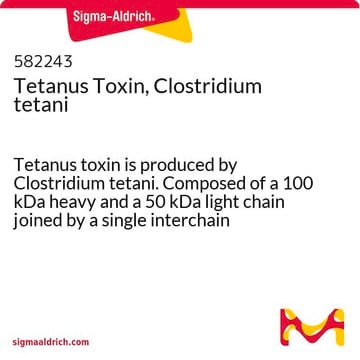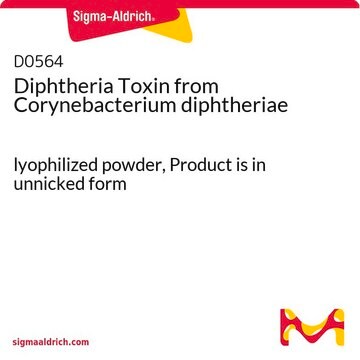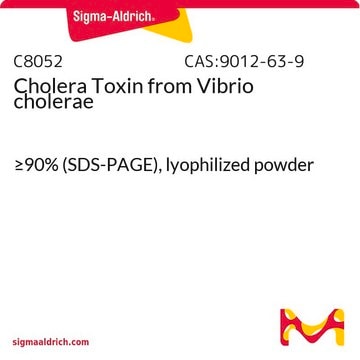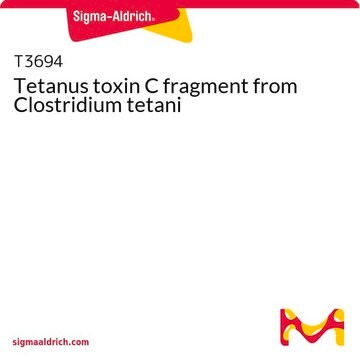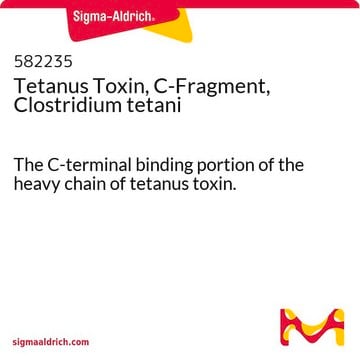T3194
Tetanus toxin
from Clostridium tetani, cleaves synaptobrevin (VAMP-2)
Selecione um tamanho
Selecione um tamanho
About This Item
Produtos recomendados
Nome do produto
Tetanus toxin from Clostridium tetani,
peso molecular
150 kDa (heavy chain (100 kDa) and a light chain (50 kDa) connected through an interchain disulfide bond)
Nível de qualidade
solubilidade
H2O: soluble
temperatura de armazenamento
2-8°C
Informações sobre genes
Clostridium tetani E88 ... tetX(1061100)
Descrição geral
Aplicação
Ações bioquímicas/fisiológicas
Nota de preparo
Reconstituição
Nota de análise
Palavra indicadora
Danger
Frases de perigo
Declarações de precaução
Classificações de perigo
Acute Tox. 1 Oral - Acute Tox. 2 Inhalation - STOT SE 1
Órgãos-alvo
Central nervous system
Código de classe de armazenamento
6.1A - Combustible acute toxic Cat. 1 and 2 / very toxic hazardous materials
Classe de risco de água (WGK)
WGK 3
Ponto de fulgor (°F)
Not applicable
Ponto de fulgor (°C)
Not applicable
Equipamento de proteção individual
Eyeshields, Faceshields, Gloves, type P3 (EN 143) respirator cartridges
Escolha uma das versões mais recentes:
Já possui este produto?
Encontre a documentação dos produtos que você adquiriu recentemente na biblioteca de documentos.
Active Filters
Nossa equipe de cientistas tem experiência em todas as áreas de pesquisa, incluindo Life Sciences, ciência de materiais, síntese química, cromatografia, química analítica e muitas outras.
Entre em contato com a assistência técnica